#kubernetes deployment
Explore tagged Tumblr posts
Text
Navigating Kubernetes Certification: Your Path to Cloud-Native Mastery
Kubernetes certification validates expertise in container orchestration. It demonstrates a deep understanding of Kubernetes, enabling efficient application deployment and management. These certifications, such as CKA, CKAD, and others, are highly respected in the IT industry and are essential for professionals aiming to excel in the world of cloud-native application development.
#kubernetes administrator certification#kubernetes aws#kubernetes certification#kubernetes deployment
0 notes
Text
Docker Swarm vs Kubernetes: Home Lab Comparison
Docker Swarm vs Kubernetes: Home Lab Comparison @vexpert #vmwarecommunities #homelab #DockerSwarmHomeLab #KubernetesHomeLab #ContainerOrchestrationComparison #ManagingContainers #DockerSwarmVsKubernetes #DockerTools #cloudnative #Kubernetes
For those seeking to delve into the realm of containers within their home lab environments, many options are available, including Docker Desktop, Rancher Desktop, and Minikube, among others. Yet, for enthusiasts seeking to venture into building out systems resembling production environments, Docker Swarm clusters and Kubernetes emerge as widely favored container orchestration tools. Each carries…
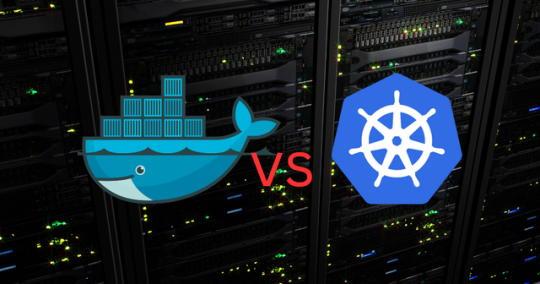
View On WordPress
#Automated scaling Kubernetes#Complex deployment with Kubernetes#Container Orchestration Tools#Docker Swarm Cluster setup#Docker Swarm ease of use#Docker Swarm in home lab#Kubernetes Deployment#Kubernetes versus Docker Swarm#Load Balancing in Kubernetes#Manage Docker Containers
0 notes
Text
Virtualization & Containerization: The New Era of Software Deployment.
Sanjay Kumar Mohindroo Sanjay Kumar Mohindroo. skm.stayingalive.in Explore how virtualization and containerization technologies like Docker and Kubernetes reshape software deployment through efficient resource use, scalability, and portability in an engaging, inspiring, and discussion-sparking deep dive. How Docker and Kubernetes are reshaping our tech world This post explains how…
#Business growth#cloud#Containerization#Cyber Security#Docker#Efficient Resource Utilization#IT Efficiency#Kubernetes#News#Open Source#Portability#Sanjay Kumar Mohindroo#Scalability#Software Deployment#Virtualization
0 notes
Text

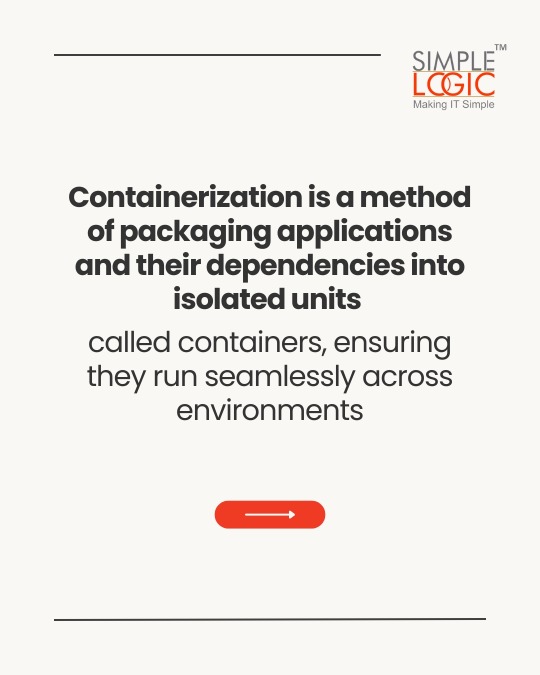
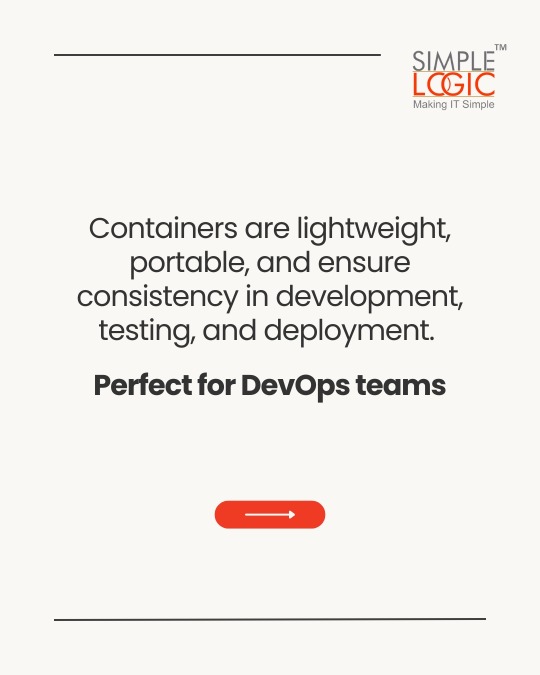
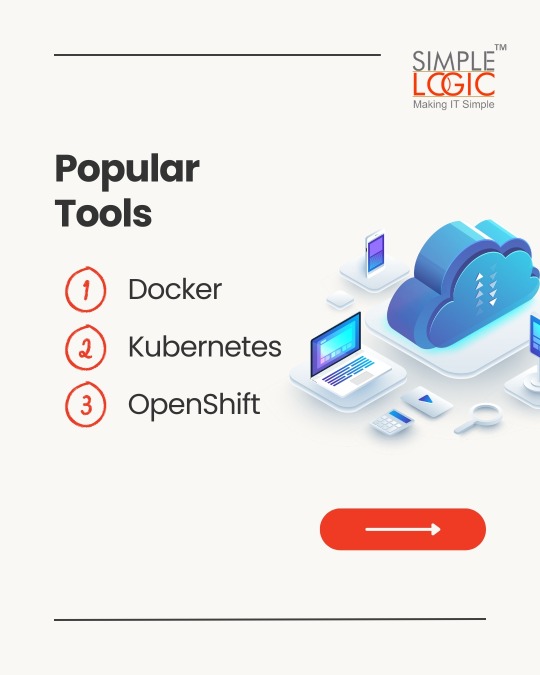
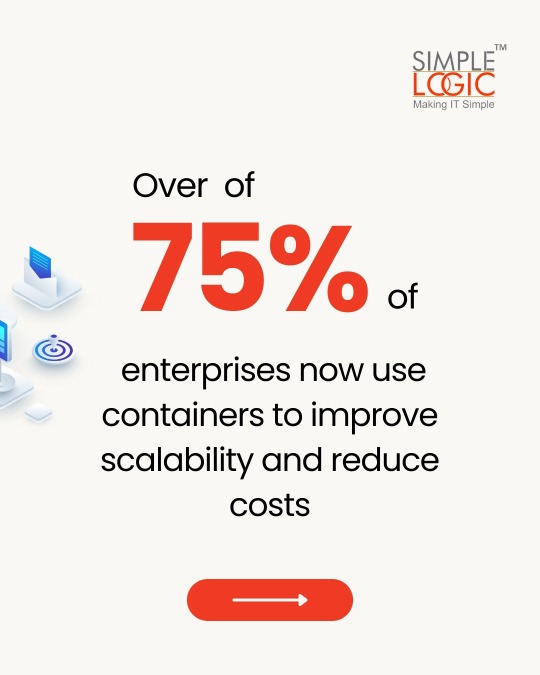

#TechKnowledge Have you heard of Containerization?
Swipe to discover what it is and how it can impact your digital security! 🚀
👉 Stay tuned for more simple and insightful tech tips by following us.
🌐 Learn more: https://simplelogic-it.com/
💻 Explore the latest in #technology on our Blog Page: https://simplelogic-it.com/blogs/
✨ Looking for your next career opportunity? Check out our #Careers page for exciting roles: https://simplelogic-it.com/careers/
#techterms#technologyterms#techcommunity#simplelogicit#makingitsimple#techinsight#techtalk#containerization#application#development#testing#deployment#devops#docker#kubernets#openshift#scalability#security#knowledgeIispower#makeitsimple#simplelogic#didyouknow
0 notes
Text
youtube
AWS EKS | Episode 10 | ReplicaSets, Deployments and Services in Kubernetes | Lets discuss.
1 note
·
View note
Text
Understand how Generative AI is accelerating Kubernetes adoption, shaping industries with scalable, automated, and innovative approaches.
#AI Startups Kubernetes#Enterprise AI With Kubernetes#Generative AI#Kubernetes AI Architecture#Kubernetes For AI Model Deployment#Kubernetes For Deep Learning#Kubernetes For Machine Learning
0 notes
Text
How Is Gen AI Driving Kubernetes Demand Across Industries?
Understand how Generative AI is accelerating Kubernetes adoption, shaping industries with scalable, automated, and innovative approaches. A new breakthrough in AI, called generative AI or Gen AI, is creating incredible waves across industries and beyond. With this technology rapidly evolving there is growing pressure on the available structure to support both the deployment and scalability of…
#AI Startups Kubernetes#Enterprise AI With Kubernetes#Generative AI#Kubernetes AI Architecture#Kubernetes For AI Model Deployment#Kubernetes For Deep Learning#Kubernetes For Machine Learning
0 notes
Text
How Is Gen AI Driving Kubernetes Demand Across Industries?

Unveil how Gen AI is pushing Kubernetes to the forefront, delivering industry-specific solutions with precision and scalability.
Original Source: https://bit.ly/4cPS7G0
A new breakthrough in AI, called generative AI or Gen AI, is creating incredible waves across industries and beyond. With this technology rapidly evolving there is growing pressure on the available structure to support both the deployment and scalability of the technology. Kubernetes, an effective container orchestration platform is already indicating its ability as one of the enablers in this context. This article critically analyzes how Generative AI gives rise to the use of Kubernetes across industries with a focus of the coexistence of these two modern technological forces.
The Rise of Generative AI and Its Impact on Technology
Machine learning has grown phenomenally over the years and is now foundational in various industries including healthcare, banking, production as well as media and entertainment industries. This technology whereby an AI model is trained to write, design or even solve business problems is changing how business is done. Gen AI’s capacity to generate new data and solutions independently has opened opportunities for advancements as has never been seen before.
If companies are adopting Generative AI , then the next big issue that they are going to meet is on scalability of models and its implementation. These resource- intensive applications present a major challenge to the traditional IT architectures. It is here that Kubernetes comes into the picture, which provides solutions to automate deployment, scaling and managing the containerised applications. Kubernetes may be deployed to facilitate the ML and deep learning processing hence maximizing the efficiency of the AI pipeline to support the future growth of Gen AI applications.
The Intersection of Generative AI and Kubernetes
The integration of Generative AI and Kubernetes is probably the most significant traffic in the development of AI deployment approaches. Kubernetes is perfect for the dynamics of AI workloads in terms of scalability and flexibility. The computation of Gen AI models demands considerable resources, and Kubernetes has all the tools required to properly orchestrate those resources for deploying AI models in different setups.
Kubernetes’ infrastructure is especially beneficial for AI startups and companies that plan to use Generative AI. It enables the decentralization of workload among several nodes so that training, testing, and deployment of AI models are highly distributed. This capability is especially important for businesses that require to constantly revolve their models to adapt to competition. In addition, Kubernetes has direct support for GPU, which helps in evenly distributing computational intensity that comes with deep learning workloads thereby making it perfect for AI projects.
Key Kubernetes Features that Enable Efficient Generative AI Deployment
Scalability:
Kubernetes excels at all levels but most notably where applications are scaled horizontally. Especially for Generative AI which often needs a lot of computation, Kubernetes is capable of scaling the pods, the instances of the running processes and provide necessary resources for the workload claims without having any human intervention.
Resource Management:
Effort is required to be allocated efficiently so as to perform the AI workloads. Kubernetes assists in deploying as well as allocating resources within the cluster from where the AI models usually operate while ensuring that resource consumption and distribution is efficiently controlled.
Continuous Deployment and Integration (CI/CD):
Kubernetes allows for the execution of CI CD pipelines which facilitate contingency integration as well as contingency deployment of models. This is essential for enterprises and the AI startups that use the flexibility of launching different AI solutions depending on the current needs of their companies.
GPU Support:
Kubernetes also features the support of the GPUs for the applications in deep learning from scratch that enhances the rate of training and inference of the models of AI. It is particularly helpful for AI applications that require more data processing, such as image and speech recognition.
Multi-Cloud and Hybrid Cloud Support:
The fact that the Kubernetes can operate in several cloud environment and on-premise data centers makes it versatile as AI deployment tool. It will benefit organizations that need a half and half cloud solution and organizations that do not want to be trapped in the web of the specific company.
Challenges of Running Generative AI on Kubernetes
Complexity of Setup and Management:
That aid Kubernetes provides a great platform for AI deployments comes at the cost of operational overhead. Deploying and configuring a Kubernetes Cluster for AI based workloads therefore necessitates knowledge of both Kubernetes and the approach used to develop these models. This could be an issue for organizations that are not able to gather or hire the required expertise.
Resource Constraints:
Generative AI models require a lot of computing power and when running them in a Kubernetes environment, the computational resources can be fully utilised. AI works best when the organizational resources are well managed to ensure that there are no constraints in the delivery of the application services.
Security Concerns:
Like it is the case with any cloud-native application, security is a big issue when it comes to running artificial intelligence models on Kubernetes. Security of the data and models that AI employs needs to be protected hence comes the policies of encryption, access control and monitoring.
Data Management:
Generative AI models make use of multiple dataset samples for its learning process and is hard to deal with the concept in Kubernetes. Managing these datasets as well as accessing and processing them in a manner that does not hinder the overall performance of an organization is often a difficult task.
Conclusion: The Future of Generative AI is Powered by Kubernetes
As Generative AI advances and integrates into many sectors, the Kubernetes efficient and scalable solutions will only see a higher adoption rate. Kubernetes is a feature of AI architectures that offer resources and facilities for the development and management of AI model deployment.
If you’re an organization planning on putting Generative AI to its best use, then adopting Kubernetes is non-negotiable. Mounting the AI workloads, utilizing the resources in the best possible manner, and maintaining the neat compatibility across the multiple and different clouds are some of the key solutions provided by Kubernetes for the deployment of the AI models. With continued integration between Generative AI and Kubernetes, we have to wonder what new and exciting uses and creations are yet to come, thus strengthening Kubernetes’ position as the backbone for enterprise AI with Kubernetes. The future is bright that Kubernetes is playing leading role in this exciting technological revolution of AI.
Original Source: https://bit.ly/4cPS7G0
#AI Startups Kubernetes#Enterprise AI With Kubernetes#Generative AI#Kubernetes AI Architecture#Kubernetes For AI Model Deployment#Kubernetes For Deep Learning#Kubernetes For Machine Learning
0 notes
Text
Skyrocket Your Efficiency: Dive into Azure Cloud-Native solutions
Join our blog series on Azure Container Apps and unlock unstoppable innovation! Discover foundational concepts, advanced deployment strategies, microservices, serverless computing, best practices, and real-world examples. Transform your operations!!
#Azure App Service#Azure cloud#Azure Container Apps#Azure Functions#CI/CD#cloud infrastructure#cloud-native applications#containerization#deployment strategies#DevOps#Kubernetes#microservices architecture#serverless computing
0 notes
Text
Install Canonical Kubernetes on Linux | Snap Store
Fast, secure & automated application deployment, everywhere Canonical Kubernetes is the fastest, easiest way to deploy a fully-conformant Kubernetes cluster. Harnessing pure upstream Kubernetes, this distribution adds the missing pieces (e.g. ingress, dns, networking) for a zero-ops experience. Get started in just two commands: sudo snap install k8s –classic sudo k8s bootstrap — Read on…
View On WordPress
#dns#easiest way to deploy a fully-conformant Kubernetes cluster. Harnessing pure upstream Kubernetes#everywhere Canonical Kubernetes is the fastest#Fast#networking) for a zero-ops experience. Get started in just two commands: sudo snap install k8s --classic sudo k8s bootstrap#secure & automated application deployment#this distribution adds the missing pieces (e.g. ingress
1 note
·
View note
Text
What is Kubeflow and How to Deploy it on Kubernetes

Machine learning (ML) processes on Kubernetes, the top container orchestration technology, may be simplified and streamlined with Kubeflow, an open-source platform. From data pretreatment to model deployment, it's like having your specialised toolbox for managing all your ML and AI operations within the Kubernetes ecosystem. Keep on reading this article to know about Kubeflow deployment in Kubernetes.
Why Kubeflow?
Integrated Approach
Complex ML processes can more easily be managed with Kubeflow because it unifies several tools and components into a unified ecosystem.
Efficiency in scaling
Thanks to its foundation in Kubernetes, Kubeflow can easily grow to manage massive datasets and ML tasks that require a lot of computing power.
Consistent results
The significance of reproducibility is highlighted by Kubeflow, who defines ML workflows as code, allowing for the replication and tracking of experiments.
Maximising the use of available resources
Separating ML workloads inside Kubernetes eliminates resource conflicts and makes sure everything runs well.
Easy Implementation
Kubeflow deployment in Kubernetes makes deploying machine learning models as web services easier, which opens the door to real-time applications.
Integration of Kubeflow with Kubernetes on GCP
For this example, we will utilise Google Cloud Platform (GCP) and their managed K8s GKE. However, there may be subtle variations depending on the provider you choose. The majority of this tutorial is still applicable to you.
Set up the GCP project
Just follow these instructions for Kubeflow deployment in Kubernetes.
You can start a new project or choose one from the GCP Console.
Establish that you are the designated "owner" of the project. The implementation process involves creating various service accounts with adequate permissions to integrate with GCP services without any hitches.
Verify that your project meets all billing requirements. To make changes to a project, refer to the Billing Settings Guide.
Verify that the necessary APIs are allowed on the following GCP Console pages:
o Compute Engine API
o Kubernetes Engine API
o Identity and Access Management (IAM) API
o Deployment Manager API
o Cloud Resource Manager API
o Cloud Filestore API
o AI Platform Training & Prediction API
Remember that the default GCP version of Kubeflow cannot be run on the GCP Free Tier due to space constraints, regardless of whether you are utilising the $300 credit 12-month trial term. A payable account is where you need to be.
Deploy kubeFlow using the CLI
Before running the command line installer for Kubeflow:
Make sure you've got the necessary tools installed:
kubectl
Gcloud
Check the GCP documentation for the bare minimum requirements and ensure your project satisfies them.
Prepare your environment
So far, we've assumed you can connect to and operate a GKE cluster. If not, use one as a starting point:
Container clusters in Gcloud generate cluster-name environment compute-zone
More details regarding the same command can be found in the official documentation.
To get the Kubeflow CLI binary file, follow these instructions:
Go to the kfctl releases page and download the v1.0.2 version.
Unpack the tarball:
tar -xvf kfctl_v1.0.2_<platform>.tar.gz
• Sign in. Executing this command is mandatory just once:
gcloud auth login
• Establish login credentials. Executing this command is mandatory just once:
gcloud auth application-default login
• Set the zone and project default values in Gcloud.
To begin setting up the Kubeflow deployment, enter your GCP project ID and choose the zone:
export PROJECT=<your GCP project ID> export ZONE=<your GCP zone>
gcloud config set project ${PROJECT} gcloud config set compute/zone ${ZONE}
Select the KFDef spec to use for your deployment
Select the KFDef spec to use for your deployment
Export
CONFIG_URI="https://raw.githubusercontent.com/kubeflow/manifests/v1.0-branch/kfdef/kfctl_gcp_iap.v1.0.2.yaml"
Ensure you include the OAuth client ID and secret you generated earlier in your established environment variables.
export CLIENT_ID=<CLIENT_ID from OAuth page> export CLIENT_SECRET=<CLIENT_SECRET from OAuth page>
You can access the CLIENT_ID and CLIENT_SECRET in the Cloud Console by going to APIs & Services -> Credientials.
Assign a directory for your configuration and give your Kubeflow deployment the name KF_NAME.
export KF_NAME=<your choice of name for the Kubeflow deployment> export BASE_DIR=<path to a base directory> export KF_DIR=${BASE_DIR}/${KF_NAME}
When you perform the kfctl apply command, Kubeflow will be deployed with the default settings:
mkdir -p ${KF_DIR} cd ${KF_DIR} kfctl apply -V -f ${CONFIG_URI}
By default, kfctl will attempt to fill the KFDef specification with a number of values.
Conclusion Although you are now familiar with the basics of Kubeflow deployment in Kubernetes, more advanced customisations can make the process more challenging. However, many of the issues brought up by the computational demands of machine learning can be resolved with a containerised, Kubernetes-managed cloud-based machine learning workflow, such as Kubeflow. It allows for scalable access to central processing and graphics processing units, which may be automatically increased to handle spikes in computing demand.
1 note
·
View note
Video
youtube
Kubernetes Deployment Explained | Tech Arkit Deployment is a resource object used to manage the deployment and scaling of applications. It provides declarative updates to applications, ensuring that a specified number of pod replicas are running at any given time. Deployments are essential for managing the lifecycle of applications in a Kubernetes cluster, enabling features such as rolling updates, rollback to previous versions, and scaling.
0 notes
Text
🚀 Unlock the power of DevOps with Kubernetes Container Orchestration!
Dive into the essentials of seamless deployment and scalability. 🌐⚙️
1 note
·
View note
Text
0 notes
Text
youtube
AWS EKS | Episode 9 | Control Plane and Namespaces in Kuberenetes
1 note
·
View note
Text
Unveil how Gen AI is pushing Kubernetes to the forefront, delivering industry-specific solutions with precision and scalability.
#AI Startups Kubernetes#Enterprise AI With Kubernetes#Generative AI#Kubernetes AI Architecture#Kubernetes For AI Model Deployment#Kubernetes For Deep Learning#Kubernetes For Machine Learning
0 notes